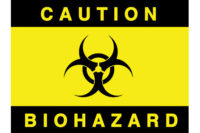How a person responds in an emergency is critical. When dealing with injuries, the victim may be reliant on how you react and the actions you take.
While not all injuries are life-threatening, how you respond can have significant long-term impact on the injured person. When an incident occurs, a first responder has four primary goals:
Keep the person alive;
Begin first aid;
Get medical care; and
Keep the victim from getting worse.
To achieve those goals, a first responder needs to be capable of recognizing emergencies. Furthermore, that person needs to know what to look for at the accident scene to determine if any safety hazards continue to exist. Beyond having the situational awareness described above, a first responder also is responsible for checking the injured worker for life-threatening conditions and establishing the next steps of response. Next steps may include providing care, calling 911 or assisting the injured worker in obtaining medical attention. Steps for emergency response are provided in our Toolbox Talk available at www.asa.net/safety-resources.
If the injury has not caused the victim to lose consciousness, it is a prudent step to gain consent from the injured worker before performing first aid. If unconscious, the victim’s consent is implied.
First responders need to check the victim’s condition before calling 911 to determine if the call must be made or if a lesser response is more applicable. The person may still require first-aid care and may need medical attention, but checking the victim’s status will help you to determine how urgent that medical care is needed. Do not unnecessarily move a victim. See our Toolbox Talk for information that a dispatcher may ask you to provide if a 911 call is made.
Another critical consideration for first responders is preventing the transmission of bloodborne pathogens. Human immunodeficiency virus (HIV), hepatitis B, and hepatitis C are examples of bloodborne pathogens. Transmission can happen through a variety of bodily fluids including blood, saliva, vomit and blood-stained materials. For this reason, first responders are strongly encouraged to use personal protective equipment such as a breathing mask, medical gloves and an apron. If medical gloves are not available, use plastic bags. In some non-life-threatening circumstances, the victim may also be asked to dress their own wound.
First responders should wash their hands with antibacterial soap and water before and after giving first aid and should avoid touching his or her mouth, nose or eyes. An alcohol-based hand gel can be used if soap and water are not available. If exposed to blood or bodily fluids, the responder should immediately wash the exposed area and contact their local health-care provider. This exposure should also be reported to the supervisor on site.
First aid is used in myriad different injuries and environments. To learn more about first-aid guidelines and tips, obtain a reference guide from a local medical provider. Training also is available through organizations such as the American Red Cross and the National Safety Council.
HELPFUL LINKS:





